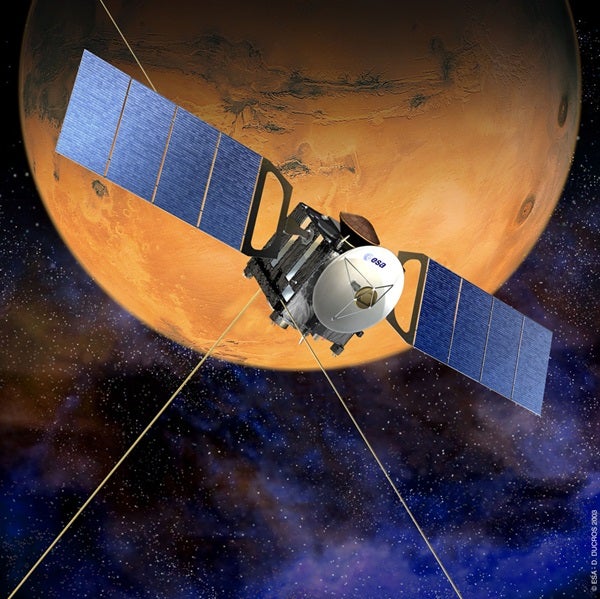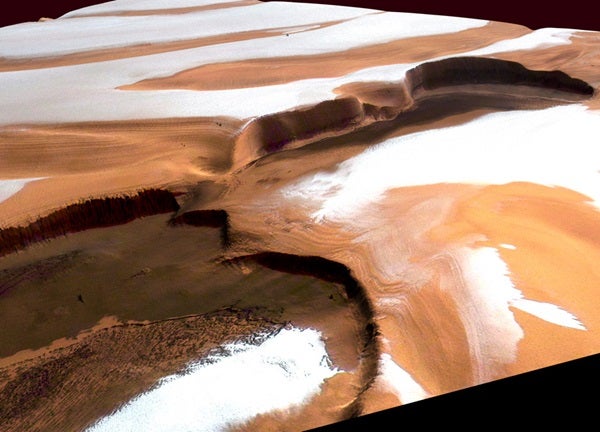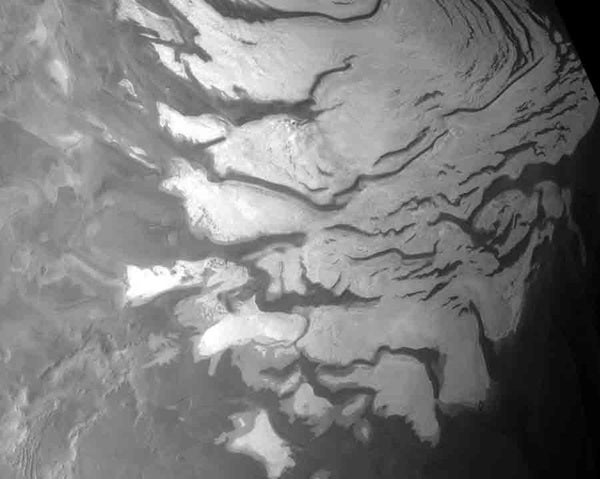During its 5,000 orbits spent investigating Martian mysteries, Mars Express has revolutionized our knowledge of Mars. Some of the most visually astonishing results have been returned by the High-Resolution Stereo Camera (HRSC), which has produced breathtaking, 3-D color images of the diverse Martian surface.
One of the most surprising discoveries has been the youthful appearance of the country-sized volcanoes of the Tharsis ridge, suggesting they may have been active only a few million years ago. The images also show that glacial landforms are widespread over much of the planet, with glacial activity continuing in some areas until perhaps 20,000 to 30,000 years ago. Among the peculiar landforms imaged by HRSC is what appears to be a recently frozen body of water in Elysium, close to the equator.
While the camera has been imaging the surface in detail, other instruments have been examining different aspects of the planet’s environment. One of the most significant results from the Visible and Infrared Mineralogical Mapping Spectrometer OMEGA has been the discovery of clays, hydrated minerals that formed early in the planet’s history, when liquid water was fairly abundant. However, the presence of sulphates and iron oxides suggests that the planet subsequently became colder and drier, with only episodic eruptions of water onto the surface.
At the poles, OMEGA has measured the surface composition and produced maps of water ice and carbon dioxide ice. Further insights into the Martian poles have come from the Mars Advanced Radar for Subsurface and Ionospheric Sounding, MARSIS, which is revealing, for the first time, the secrets of the planet’s subsurface.
The multi-frequency radar has also been probing the upper atmospheric layer (the ionosphere) and found that the distribution of charged particles is linked with patchy magnetic fields in the Martian crust.
Although Mars’ atmosphere is very thin, it plays an important role in the planet’s evolution. The Planetary Fourier Spectrometer (PFS) has made the most complete map to date of its chemical composition. Evidence for the presence of methane could indicate that volcanic activity, or even simple life forms may still be present today.
The Energetic Atoms Analyser (ASPERA) has confirmed that the solar wind is slowly stripping atoms from the atmosphere down to an altitude of 270 km, although the rate of loss is surprisingly slow.
The MaRS radio science experiment has studied surface roughness by pointing the craft’s high-gain antenna at the planet and recording the echoes. It has also been used to measure small changes in the spacecraft’s orbit caused by gravity anomalies. Some of the most marked increases in surface gravity have been found over the volcanic Tharsis ridge, indicating a higher-than-average crustal density. Another discovery has been the existence of an ionospheric layer created by meteors burning up in the atmosphere.
With the mission already extended until at least 2009 and the possibility of further extensions into the next decade, ESA is keen to ensure that Mars Express will continue to provide the best possible scientific return.












